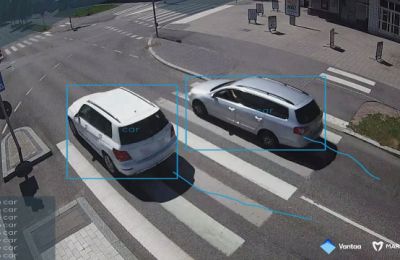Artificial intelligence could reduce unnecessary stops in traffic lights in a single intersection by 30,000 annually
The city of Vantaa has been experimenting with applying computer vision and artificial intelligence to traffic lights. The results for the pilot have been published in mid June 2020.
The aim of a pilot project was to understand the real time situation in a given intersection to improve efficiency of traffic traffic flow and improve detection of pedestrians and cyclists.
Traffic engineer Heikki Alkila explains that the control of traffic lights can be much improved with the application of advanced technologies such as AI and CV (Computer Vision). For example if it can be determined that a cyclist will turn and not continue straight, the flow of traffic could be improved. In areas with heavy truck traffic the traffic lights could be programmed to allow them to pass from one intersection to another without stops.
The pilot project used technology from MarshallAI to track an intersection in the Tikkurila region of Vantaa. The pilot project has been concluded, but the cameras are still tracking traffic and the labelled video feed is still streaming online: Talvikkitie - Peltolantie
According to the calculcations based on this specific intersection the technology could avoid over 30,000 unnecessary stops and every tenth second of waiting time without a negative impact on safety. However the technology readily available on the market is not very advanced yet, and they cannot be applied at a wide scale to yield these results at scale.
Source: Vantaalla tutkittiin tekoälyn käyttöä liikenneohjauksessa

